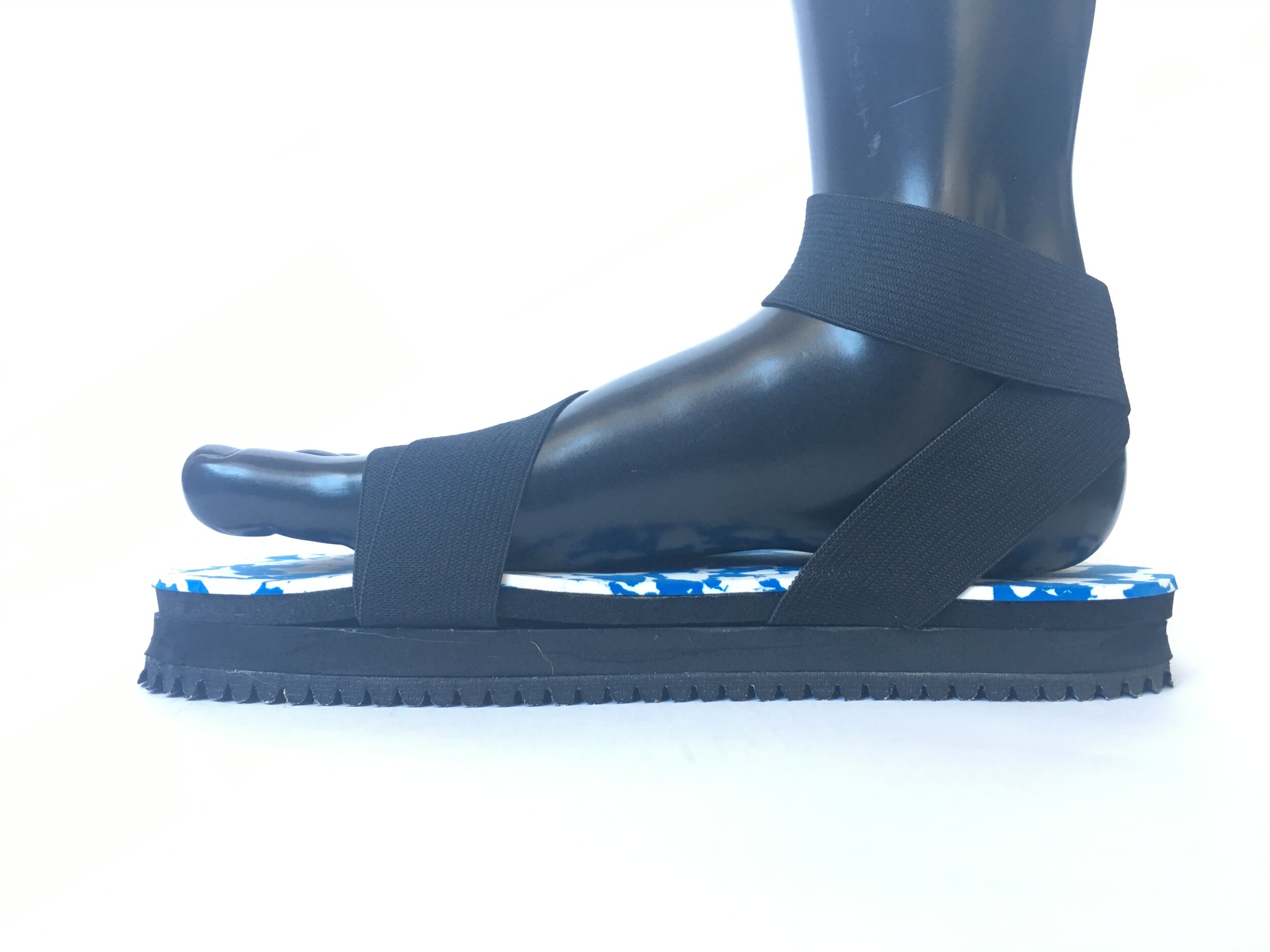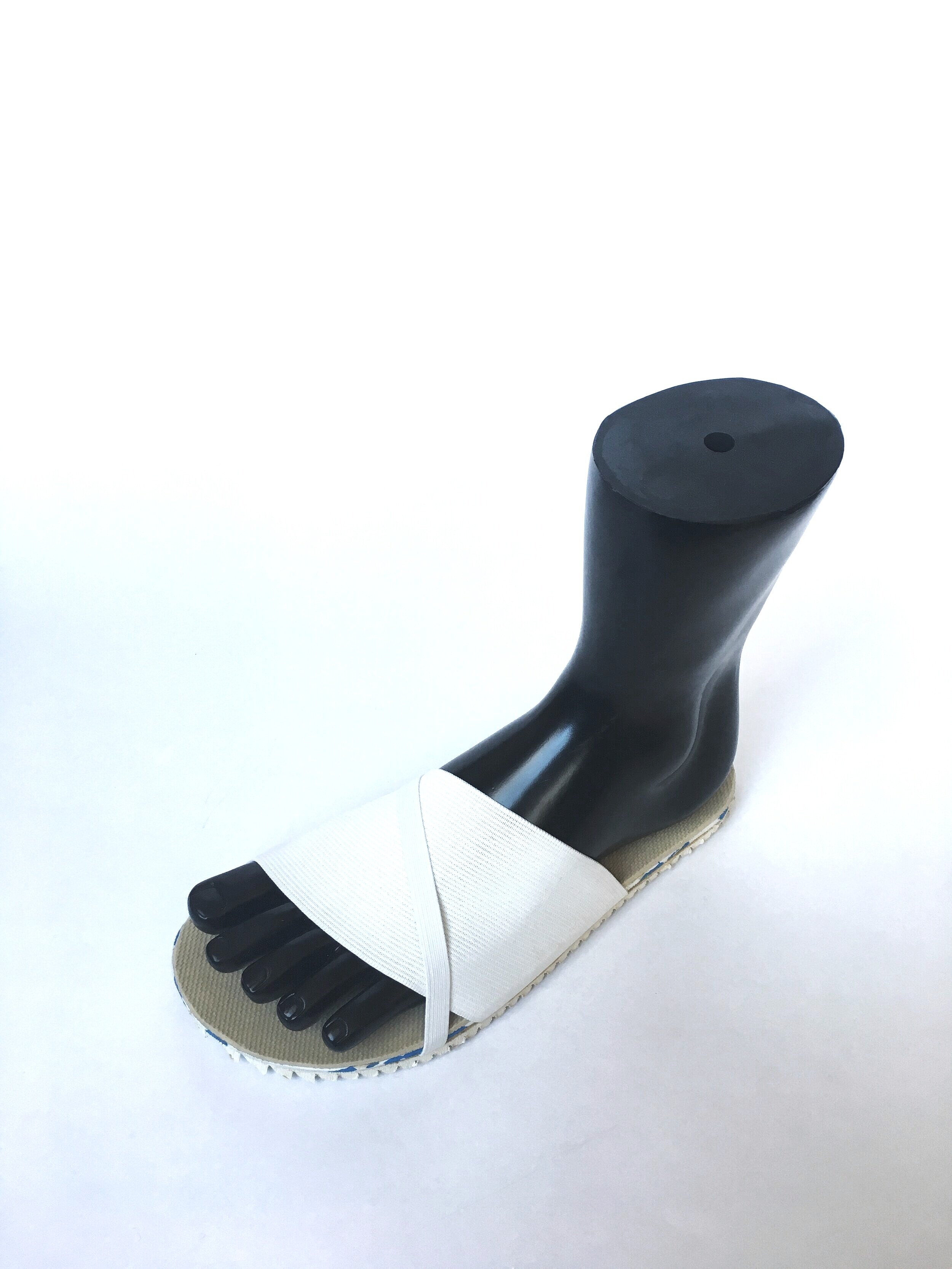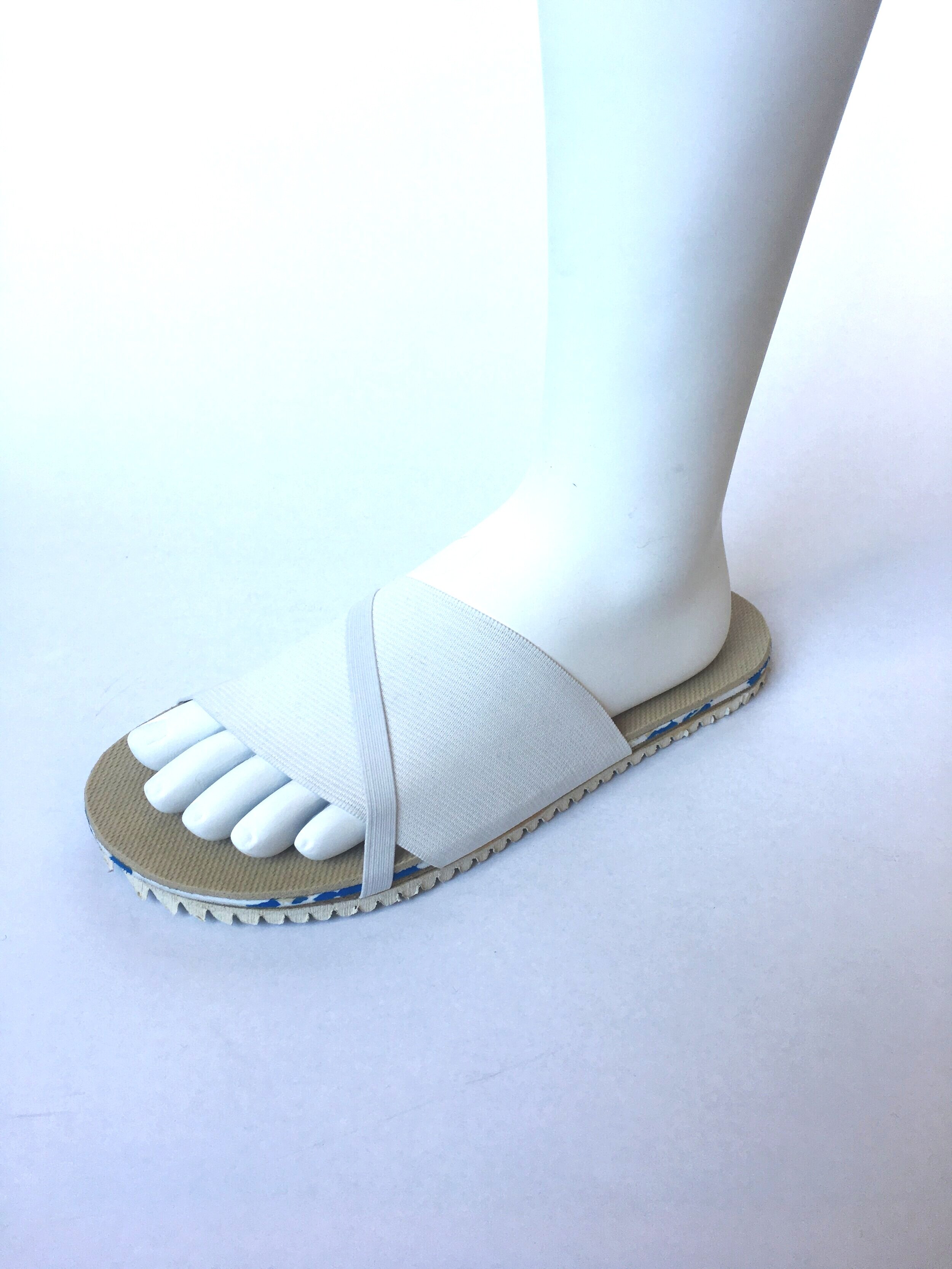using the same spacious plan shape from the 2013 iterations, these 2018 pairs utilize lightweight and flexible foam soles. While they are not as info-conveying or dynamically strengthening as barefoot shoes would be, they are towards a healthier shoe/foot in a harm reduction model of within the barefoot framework in shoe design.
As a moderate and practical follower of barefoot principals, I am most interested in making LessHarmful shoes MoreWidelyAvailable. Most people are not going to go for barefoot – but they will go for something footshaped if it has a familiar familiar thick sole. Sure, they won’t build muscle as they would with all the ground texture variation of a barefoot shoe, but they WILL have a chance at avoiding bunions, if they can swap a tapering toebox for a footshaped toebox. If handfuls of popular shoe brands simply began offering “footshaped shoes” among their other skews, a great service will have been provided to the masses.
(Sandals are not a great example of mass market repulsion to thin bottoms, but barefoot Chelsea boots and combat boots are. Personally I can’t bring myself to buy a pair of barefoot boots – none of them yet fit my aesthetic preferences.)




















